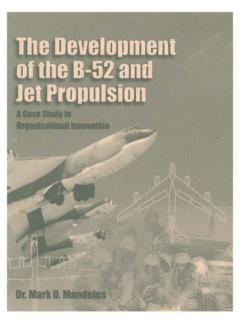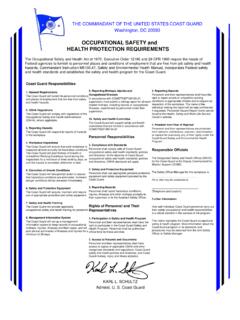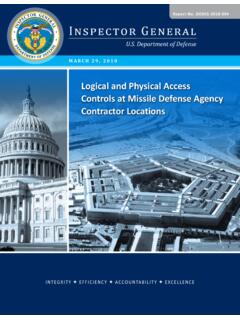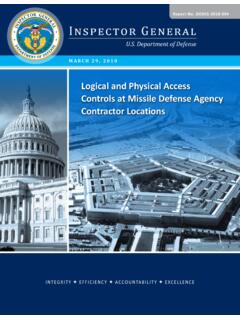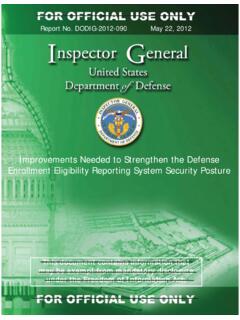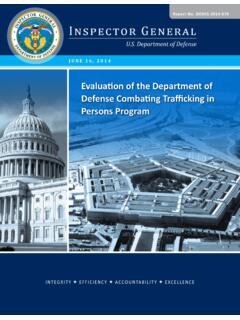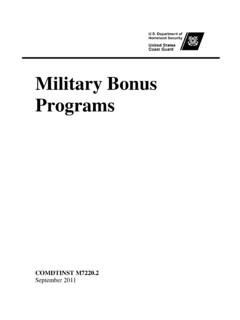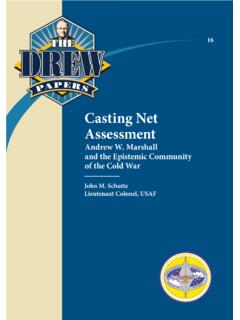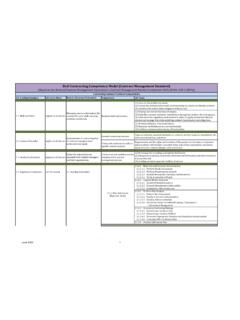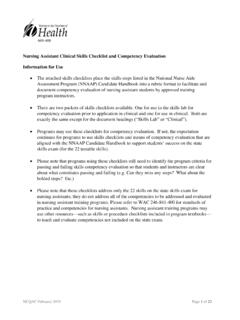Transcription of Irregular Warfare Annex to the National Defense Strategy ...
1 SUMMARY OF THE Irregular Warfare Annex TO THE National Defense Strategy SUMMARY OF THE Irregular Warfare Annex TO THE National Defense Strategy This page left intentionally blank SUMMARY OF THE Irregular Warfare Annex TO THE National Defense Strategy TABLE OF CONTENTS Foreword .. 1 Strategic Environment .. 2 Irregular Warfare : An Enduring Mission and Core competency .. 2 Problem Statement .. 2 Central Idea .. 3 Recent Lessons Guide Our Approach .. 4 We Remain Underprepared for Irregular War .. 4 Most Military Capabilities Can Be Applied in an Irregular Context .. 4 Conventional Overmatch Encourages Adversaries to Pursue Indirect Approaches.
2 4 Irregular War Requires Unified Action .. 5 Recent Operations Set a Standard for an Enduring Approach .. 5 Irregular Warfare Strategic Approach .. 6 Institutionalizing Irregular Warfare .. 6 Operationalizing Irregular Warfare .. 7 1 SUMMARY OF THE Irregular Warfare Annex TO THE National Defense Strategy FOREWORD Irregular Warfare is an enduring, economical contribution to America s National security, and will remain an essential core competency of the Department of Defense . The character and form of war are constantly changing, yet its fundamental nature remains the same. Though Great Power Competition is now our primary National security challenge a departure from conducting almost two decades of continuous Irregular war against violent extremist organizations worldwide the requirement for mastery of Irregular Warfare persists.
3 Far from abandoning these critical competencies, we will sharpen these capabilities for application against peer competitor, nation-state adversaries. This summary of the Irregular Warfare Annex to the National Defense Strategy explains that Irregular Warfare is to be institutionalized as a core competency with sufficient, enduring capabilities to advance National security objectives across the spectrum of competition and conflict, in alignment with the NDS. The Department will employ these concepts and capabilities in a resource-sustainable approach to dictate the terms and tempo of competition to prevail against all global adversaries short of war, and build and sustain our global advantage in careful coordination with allies and partners.
4 Should war come, these capabilities will shape the environment to ensure combat dominance and our ability to end any conflict on our terms. Consequently, the Department of Defense will: (1) make permanent the mindset and capabilities necessary to succeed in its current Irregular Warfare mission sets; and (2) leverage all Irregular capabilities in our arsenal, including the unique abilities of our interagency and foreign partners, to compete against revisionist powers and violent extremist organizations alike. This approach does not require significant new resources to meet our strategic vision; it requires new ideas and new means of employing existing capabilities.
5 We must not and will not repeat the boom and bust cycle that has left the United States underprepared for Irregular Warfare in both Great Power Competition and conflict. Americans expect their military to do more than react to crises, they expect us to compete and maintain our advantages. 2 SUMMARY OF THE Irregular Warfare Annex TO THE National Defense Strategy STRATEGIC ENVIRONMENT The United States is engaged in global competition to advance interests and gain enduring strategic advantage. The Department s approach to Irregular Warfare must evolve to address the full spectrum of competition and conflict against potential state adversaries, while sustaining campaigns against select non-state actors.
6 This summary of the Irregular Warfare Annex to the 2018 National Defense Strategy (NDS) provides a plan to institutionalize Irregular Warfare (IW) as an enduring core competency for the entire Joint Force. This plan is grounded in the lessons of recent conflict. Irregular Warfare : An Enduring Mission and Core competency Irregular Warfare is a struggle among state and non-state actors to influence populations and affect legitimacy. IW favors indirect and asymmetric approaches, though it may employ the full range of military and other capabilities, in order to erode an adversary s power, influence, and will. It includes the specific missions of unconventional Warfare (UW), stabilization, foreign internal Defense (FID), counterterrorism (CT), and counterinsurgency (COIN).
7 Related activities such as military information support operations, cyberspace operations, countering threat networks, counter-threat finance, civil-military operations, and security cooperation also shape the information environment and other population-focused arenas of competition and conflict. State adversaries and their proxies increasingly seek to prevail through their own use of Irregular Warfare , pursuing National objectives in the competitive space deliberately below the threshold likely to provoke a conventional response. China, Russia, and Iran are willing practitioners of campaigns of disinformation, deception, sabotage, and economic coercion, as well as proxy, guerrilla, and covert operations.
8 This increasingly complex security environment suggests the need for a revised understanding of IW to account for its role as a component of great power competition. It is in this competitive space that the Department must innovate. We must creatively mix our traditional combat power with proactive, dynamic, and unorthodox approaches to IW that can shape, prevent, and prevail against our nation s adversaries and maintain favorable regional balances of power alongside our key partners and allies. Problem Statement IW is a persistent and enduring operational reality employed by non-state actors and increasingly by state actors in competition with the United States.
9 Past approaches to IW have been cyclical and neglected the fact that IW in addition to nuclear and conventional deterrence can proactively shape conditions to the United States advantage in great power competition. This reactive cycle fails to prepare the United States to conduct traditional Warfare or Irregular Warfare effectively. All of these conditions are reversible. 3 SUMMARY OF THE Irregular Warfare Annex TO THE National Defense Strategy Central Idea The Department must institutionalize Irregular Warfare as a core competency for both conventional and special operations forces, sustaining the ability to impose costs and create dilemmas for our adversaries across the full spectrum of competition and conflict.
10 To accomplish this vision, the Department will: Break the reactive cycle of investment in IW capabilities by institutionalizing lessons learned from past conflicts, and preserving a baseline of IW-focused expertise and capabilities; Sustain IW as a core competency for the entire Joint Force, not just Special Operations Forces; Ensure widespread understanding and sufficient expertise in IW; Ensure its approach to IW becomes more agile and cost-informed by developing and employing resource-sustainable IW capabilities; Seize the initiative and use IW capabilities proactively to expand the competitive space, defeat our adversaries competitive strategies, and prepare for an escalation to conflict, if required; and Organize to foster and sustain unified action in IW with interagency partners as well as key allies and partners.

